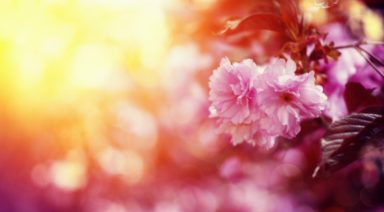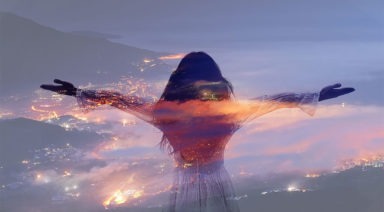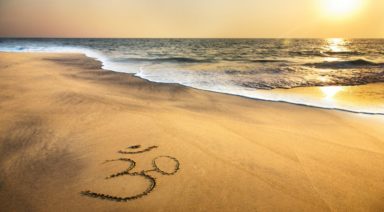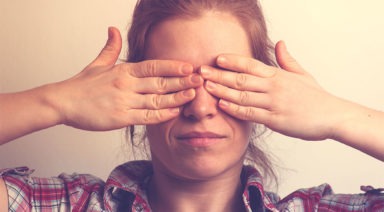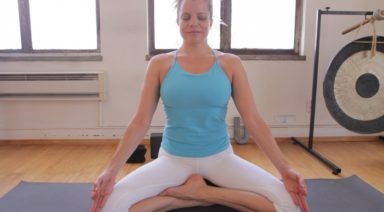Why Does Your Mala Necklace Have 108 Beads?

From the yoga studio to a night on the town, people are donning mala bead necklaces around the globe. However, this trend is steeped in meaningful tradition and symbolism. Each mala necklace has 108 beads, and each bead evokes an energetic frequency based on its material, whether stone or seed.
What is the Significance of 108?
The number 108 has a range of significance across many different cultures and disciplines. For example, this number informs the architecture of sacred texts that are central to yoga and eastern philosophy. As a devoted scholar of yoga and tantra, Shiva Rea explains in Tending the Heart Fire, “there are 108 chapters of the Rig Veda, 108 Upanishads and 108 primary Tantras.” And these texts are written in Sanskrit, a language comprising 54 letters, each with a masculine (Shiva) and feminine (Shakti) form, 54 x 2 = 108. Listed below are just a few of the many relationships that carry this number.
Ayurveda and Other Religions
In in the field of Ayurveda, there are 108 sacred places, or marmas, in the body, identifying intersections of matter and consciousness. When manipulated, these points can awaken and align the vital energy. Members of the Vedic tradition see this number as denoting the wholeness of the universe: one represents the solar masculine, zero represents the lunar feminine and eight represents the infinite nature of all things. In the classic japa mala, used in Buddhism and Hinduism, there are 108 beads used for prayer and mantra.
Mathematics and Astronomy
Mathematicians favor the number 108 for its countless patterns and potential divisions. For example, it is divisible by the sum of its parts and most of its proper divisors, making it a semi-perfect number. Through the lens of astronomy, the diameter of the sun is approximately 108 times that of earth and the distance from our planet to its solar star is, on average, 108 times the diameter of the sun. A similar parallel relationship also exists between the earth and the moon.

What is a Mala?
A mala, meaning garland in Sanskrit, evokes a circular, continuous form. In practice, a mala is the devoted offering of repeated cycles (typically in divisors of 108) of mantra japa or yoga asana. Within a mala, there is always a sense of beginning, continuing and completion. Both inside each individual cycle and in the practice as a whole. This three-form (trimurti) quality allows us to embody, in practice, the rhythmic cycles ever-present in the natural universe: creation (srishti), sustaining (sthiti) and destruction (samhara).
How to Use Your Malas to Meditate
You can use your malas to meditate anytime, anywhere. First, select a mantra, intention or prayer that you would like to repeat.
Find Your Mantra
You can focus your mantra on yourself or on others. There are many to choose from, in English or Sanskrit. Choose the right one for you and go with it. Through your practice, your malas will become infused with the energy of your mantra and prayer. Keep in mind that some practitioners believe each mala has one unique mantra or dedicated prayer. Here are a few ideas:
- May all beings be happy, peaceful and free from suffering
- I am loved, I am loving, I am love
- Lokah samastah sukhino bhavantu
- Om mani padme hum
Feel the Count
Find a comfortable seat and hold your malas in one hand. Start with the guru bead, the large bead at the bottom. Hold it between your thumb and middle finger, then start moving your fingers along each bead and repeating your mantra aloud or silently. The index finger represents ego, so try not to use your index finger as you count. Try closing your eyes, repeating your mantra, and feeling for the guru bead, which signifies you have reached 108.
Living Yoga | Members Only
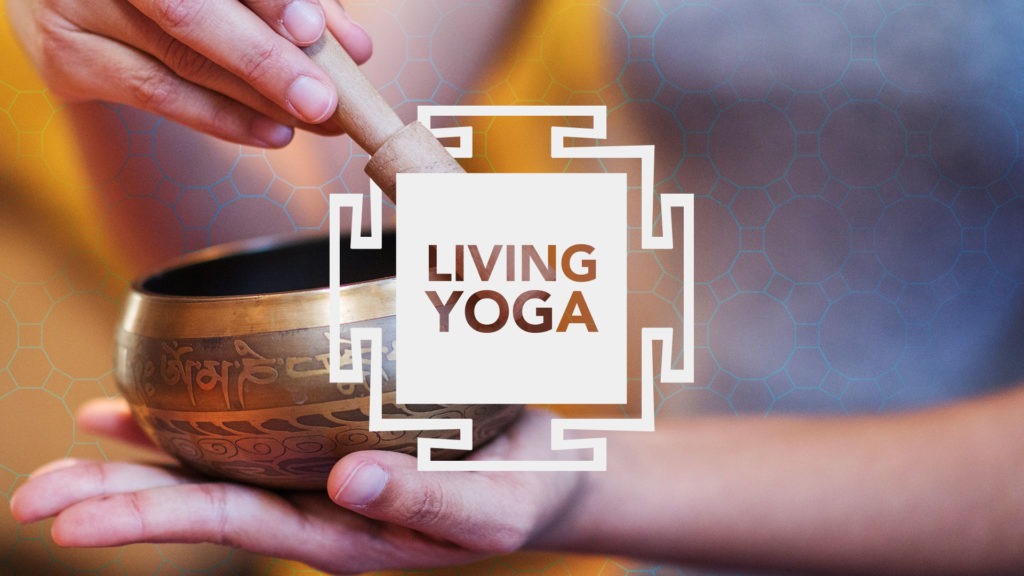
Living Yoga: Make Yoga Your Lifestyle
Yoga is more than the practice of asana, or physical postures. Living yoga means integrating the principles of yoga into your thoughts, words and actions; it means taking yoga beyond your mat. Learn more about living yoga and explore a variety of class option such as Tantrik Meditations, Yogic Paths and Injury, Inquiry and Insight to expand your practice.
The Eight Limbs of Yoga
The Eight Limbs of Yoga are core principles that serve as a compass for living a meaningful and purposeful life.
1. Yamas
Yamas are ethical considerations to help guide interactions with others. There are five yamas:
- Nonviolence (Ahimsa)
- Truthfulness (Satya)
- Non-stealing (Asteya)
- Chastity and fidelity (Brahmacharya)
- Non-coveting (Aparigraha)
At first glance, these considerations mirror the basic morals taught in kindergarten, but have depth in their continued practice. Here are a few alternative versions to consider:
- Ahimsa: practice nonviolence in thought, word and deed; practice self-love
- Satya: tell the truth; opt for silence if your words may harm others
- Asteya: do not steal, even in non-material ways, such as withholding information or time
- Brahmacharya: use your energy wisely and with intention; avoid excess or overindulgence
- Aparigraha: you are enough and you have everything you need already
Please keep in mind that there are many interpretations of the Yamas and Niyamas; find the definitions best suited to your personal practice.
2. Niyamas
The Niyamas are practices that inform self-discipline and worldview. The maxims below generally reflect the essence of each Niyama:
- Saucha: “Leave a place cleaner than you found it” (cleanliness)
- Santosha: “Don’t worry, be happy” (contentment)
- Tapas: “When the going gets tough, the tough gets going” (willpower and self-discipline)
- Svadhyaya: “Learn from your mistakes” (study of self and sacred scriptures)
- Ishvara Pranidhana: “Have faith” (surrender to the divine)
3. Asana
Asana refers to the physical postures practiced in yoga. Derived from the root word as in Sanskrit, which means seat, asana is designed to prepare the body and mind for seated meditation. The term asana refers to the ancient yogic tradition of taking a seat close to your teacher. Beyond the physical, asana refers to an outlook that life is full of opportunities to learn, even through obstacles: find the teacher in all things.



